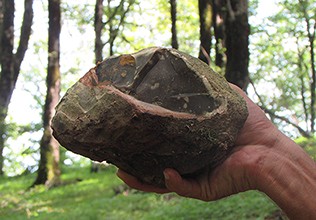The first evidence for Late Pleistocene hominin populations on the southern Caspian Sea coast
Abstract

The southern shore of the Caspian Sea is well known for its great potential in relation to sites of Mesolithic date (e.g. Coon 1951; Jayez & Vahdati Nasab 2016). Situated between two major geographic barriers—the Alborz Mountains to the south, and the Caspian Sea to the north—this area has been considered one of the major hominin dispersal corridors during the Pleistocene–Holocene transition (Vahdati Nasab et al. 2013). Furthermore, the relatively stable and mild climatic conditions, vast and lush temperate forests, and abundance of fauna and water resources have all made this region an attractive niche for human settlement.
Authors
- Hamed Vahdati Nasab
Department of Archaeology, Faculty of Humanities, Tarbiat Modares University, Tehran 14115-139, Iran - Kourosh Roustaei
Iranian Center for Archaeological Research (ICAR), Tehran, Iran - Mohammad Ghamari Fatideh
Department of Archaeology, University of Mazandaran, Babolsar, Iran - Fatemeh Shojaeefar
Department of Archaeology, Marlik Higher Education Institute, Nowshahr, Iran - Milad Hashemi Sarvandi
Department of Archaeology, Faculty of Humanities, Tarbiat Modares University, Tehran 14115-139, Iran

 Cite this article
Cite this article